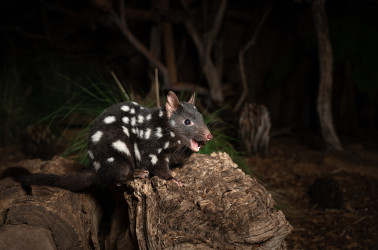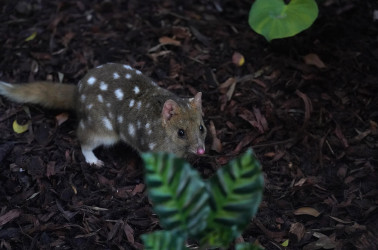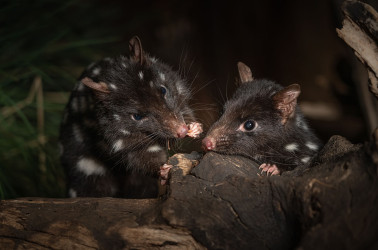The Eastern quoll (Dasyurus viverrinus) is one of Australia’s four quoll species - a marsupial predator closely related to the Tasmanian Devil. Slightly smaller than your average house cat, they play a critical role in the ecosystems they inhabit by preying on a variety of smaller animals including birds, lizards and insects.
Bringing back the Eastern Quoll
Returning to the mainland at Jervis Bay Territory
The Project
The Eastern Quoll has been extinct on mainland Australia since the 1960s, clinging to life in Tasmania. Our new partnership with National Parks Conservation Trust, WWF-Australia, Booderee National Park, the Wreck Bay Aboriginal Community, and the Australian National University supported by Shoalhaven City Council, envisages the return of this important native predator to its historic home.
Why we need to act
The Eastern Quoll has a pointed nose, bushy tail, and its fur is covered in white spots. Their coats vary in colour between black and fawn, often being confused as two distinct species.
Having been extinct on the mainland for more than 50 years, this project aims to establish a new wild population within NSW, in the Jervis Bay Territory.

Threats to the species
The Eastern Quoll was decimated with the introduction of cats and foxes to Australia. Humans played an equal role in their demise, hunting them for killing chickens, and causing innumerable deaths through road collisions. As our suburbs squeezed further into their habitat, human-quoll interactions became unavoidable until, in the 1960s, the last Eastern Quoll on mainland Australia was discovered on a highway in NSW.

Solution and approach
Our partners share the aim to reintroduce the Eastern Quoll to the wilds of mainland Australia and to create a self-sustaining population. To confront the issues at hand and give this important carnivore a chance of returning, this project will progress through a number of phases.
Based in situ in Booderee National Park (BNP), it would begin with a soft-release of Eastern quolls into the BNP Botanic Gardens. Once the quolls are breeding, a staged reintroduction/release to the broader park would occur.
The latter of these steps would be dependent on the ongoing suppression of fox numbers, and working with local communities to manage human impacts such as cars and habitat degradation.



Follow our cause in saving Australia's endangered wildlife, and receive newsletter updates on the Bringing back the Eastern Quoll and other projects and successes.



